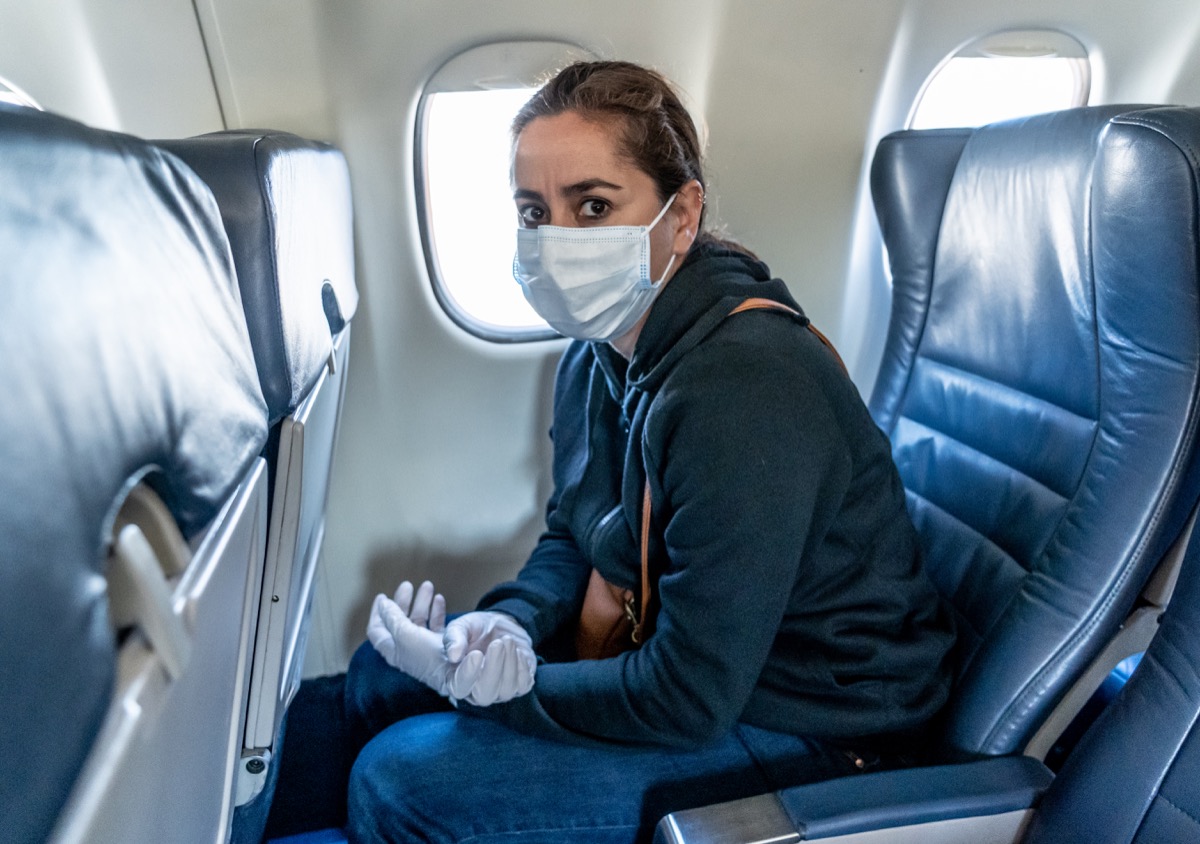Both studies were published in the Centers for Disease Control and Prevention’s (CDC) journal Emerging Infectious Diseases, and examined the spread of COVID between passengers on long-haul trips. One studied a 15-hour flight from Boston to Hong Kong in March in which two passengers and two flight attendants tested positive for genetically identical strains of the virus after arriving, USA Today reports.ae0fcc31ae342fd3a1346ebb1f342fcb The other analyzed a 10-hour flight in March from London to Hanoi, Vietnam, on which 16 passengers aboard tested positive for COVID after arriving, with 12 of the cases having sat within two rows of one symptomatic person in business class. The authors of the study concluded that “seating proximity was strongly associated with increased infection risk.” Still, authors of both studies point out that there was no data available on how many people aboard were wearing face masks, which has become a requirement for flyers in the months since the flights in question took place. But even though some airlines have instituted in-air distancing measures to space out passengers, the authors of the London flight study point out that those measures may still not be sufficient to keep travelers safe. “We conclude that the risk for on-board transmission of SARS-CoV-2 during long flights is real and has the potential to cause COVID-19 clusters of substantial size, even in business class-like settings with spacious seating arrangements well beyond the established distance used to define close contact on airplanes,” they write. “As long as COVID-19 presents a global pandemic threat … better on-board infection prevention measures and arrival screening procedures are needed to make flying safe.” RELATED: For more up-to-date information, sign up for our daily newsletter. The CDC and other health experts have long noted that most viruses and other germs do not spread easily on flights because of how air is circulated and filtered on airplanes. “The air quality on a commercial airliner is actually quite high, with the air volume in the cabin being completely refreshed every two to four minutes,” Kim Schive of MIT Medical explains. “Air flows into the cabin vertically—it enters from overhead vents and is sent downward in a circular motion, exiting at floor level. Once air leaves the cabin, about half is dumped outside, and the rest is sent through HEPA (high-efficiency particulate air) filters, similar to those used in hospitals, before being mixed with fresh outside air and entering the cabin again.” However, the studies do raise concerns that flying could be a risky move. Another recent study of 1,600 coronavirus cases found that close to 11,000 people had been potentially exposed on flights, but due to a lack of contact tracing information and the lag time between landing and the onset of symptoms, no cases were able to be conclusively linked, The Washington Post reports. At this time, the CDC’s travel guidelines note that staying safe on your way to the airport, while boarding, and deplaning is crucial. The agency suggests that you wear a mask to keep your nose and mouth covered, stay six feet away from anyone who’s not from your household, wash your hands or use hand sanitizer frequently, and avoid touching your eyes, nose, and mouth. They also point out that flying in particular can make some of these things impossible. “Air travel requires spending time in security lines and airport terminals, which can bring you in close contact with other people and frequently touched surfaces,” they write. “However, social distancing is difficult on crowded flights, and sitting within six feet of others, sometimes for hours, may increase your risk of getting COVID-19.” And for more behaviors that make your chances of contracting the virus spike, check out What You’re Doing Every Day That Puts You at COVID Risk.
